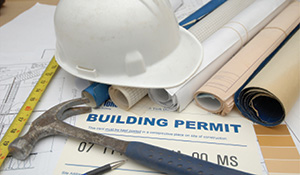
AMRDEC Tech Talk / Mr. David Cripps: Most of you will be familiar with the concept of “building code” when it comes to putting up a house, an office building, a bridge or some other structure. Years ago smart engineers and planners figured out, mostly through trial and error, that there are a minimum set of standards necessary to make a structure do what it is supposed to do for the intended life. Then they tacked a healthy safety margin onto the minimums in order to account for variations in the exposure of the structure to its environment.
 AMRDEC AED GRAPHICInsurance companies who don’t want to lose money make sure that the structure is “up to code” before they insure it. Local governments who are somewhat responsible for the health and safety of their constituents don’t want to have to condemn properties, so they review plans before issuing building permits and then inspect the construction as it proceeds in order to make sure that the builder is following the approved plan. Over time, as we collectively learn more about stuff like wind loads, snow loads, traffic loads, soil stability, earthquakes, etc., the smart folks review and update the building codes in order to maintain a constant level of overall safety for people in and around the structures.
AMRDEC AED GRAPHICInsurance companies who don’t want to lose money make sure that the structure is “up to code” before they insure it. Local governments who are somewhat responsible for the health and safety of their constituents don’t want to have to condemn properties, so they review plans before issuing building permits and then inspect the construction as it proceeds in order to make sure that the builder is following the approved plan. Over time, as we collectively learn more about stuff like wind loads, snow loads, traffic loads, soil stability, earthquakes, etc., the smart folks review and update the building codes in order to maintain a constant level of overall safety for people in and around the structures.
Design Standards
The airworthiness business is not very different from the construction business in that regard. Usually from the results of component failures and aircraft incidents and accidents, we have learned that we also need a set of building codes for aviation systems. Many of our lessons were learned in blood. Being geek engineers, we don’t call them “building code” – to us they are Aeronautical Design Standards, and we have a lot of them. They cover such things as structural static and dynamic loads, electrical loads, lightening protection, crash survivability, electromagnetic compatibility and vulnerability, crashworthy fuel systems, aircraft handling qualities, gas turbine blade design, engine design run point stability, run-dry transmissions and gearboxes, etc. The list is really quite long, covering every known way that we can ensure an aircraft will not be prone to a specific failure mode.
More Precise
But unlike ground structures, we need to be a lot more precise because we don’t have the luxury of large safety factors. For ground structures, safety factors can range from around 10 to around 100. That means if you expect the maximum load to be a certain amount, multiply that load by 10 or 100 and design for that higher load. But more “robust” design means heavier weight, and nobody wants a heavy aircraft. So in aviation, safety factors are more on the order of 1.4 to 2.0, which means we have to be a lot more precise in the way we measure things and how we conduct the analyses. As importantly, we also have to monitor production, because anything manufactured has a certain “manufacturing variability” and we need to ensure that even the bottom of the variability curve still meets the appropriate design standard.
Development
We don’t just sit here in Huntsville dreaming up new standards. Our engineers participate in industry and professional society standards forums, where we remain attuned to developments in all relevant technologies. We also influence these forums to account for the sometimes unique environments that military aviation encounters in order to minimize the differences in designing and qualifying widget X for use on a commercial aircraft and on a military aircraft. We work with the Federal Aviation Administration (FAA) to ensure we understand their standards and generally only vary from them when we have specific need to do so caused by where and how we fly. We also partner with our sister Services, harmonizing our standards so aircraft Y can be in service in the Army and in the Navy or Air Force with each Service having confidence that it will serve its purpose safely.
None of our standards are carved in stone. Each adapts over time as we learn more. And we typically tailor the standards to specific applications, as no two model aircraft are used exactly the same. Our goal is that for each model aircraft there is a set of standards that, when met, will ensure the aircraft will remain safe to fly throughout its useful life.
Mr. David Cripps is the deputy director of the Aviation Engineering Directorate of the U.S. Army Aviation and Missile Research, Development, and Engineering Center located at Redstone Arsenal, AL.







